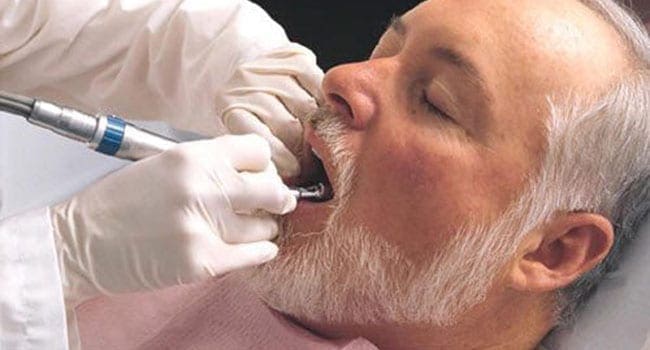 Last year, a provincial government report found that dental procedures cost up to 44 per cent more in Alberta than in neighbouring provinces. Does this inflated cost have an impact on dental health? You bet.
Last year, a provincial government report found that dental procedures cost up to 44 per cent more in Alberta than in neighbouring provinces. Does this inflated cost have an impact on dental health? You bet.
A staggering 62 per cent of Albertans reported limiting dental visits due to cost concerns. A majority of Albertans skipping basic dental health care because of the price is a problem. If dental health isn’t maintained, complications can send patients to the emergency room at great public cost.
Professional dental societies publish fee guides in most provinces to help provide dentists – who are primarily self-employed – a benchmark for what to charge their customers. The fee guides also encourage price competition, improve transparency and better inform patients.
But the Alberta Dental Association and College (ADAC) stopped publishing its fee guide in 1997, deciding to leave pricing up to the free market instead. Critics believe this may have contributed to the high cost of dental care in the province.
After pressure from the government, the ADAC released a new fee guide in August in an attempt to improve the situation. They recommend a three per cent reduction in all dental procedure costs. Alberta Health Minister Sarah Hoffman summed it up when she said Albertans “deserve better.”
The new fees remain cost prohibitive to many Albertans. For example, the new guide recommends that a standard oral exam for a new patient costs $75.36, compared to the $43.10 suggested in British Columbia’s guide.
And while a three per cent savings will benefit private insurers and those who can afford to visit a dentist, this very modest reduction is unlikely to persuade the many individuals who previously couldn’t afford dental care from seeking it now.
Although Albertans pay the highest fees for dental care in Canada, high costs and low rates of public funding for dental health are a problem across the country. Most Organization for Economic Co-operation and Development countries far exceed Canada’s per-capita public expenditure on dental care and some include dental services as part of their publicly-funded national health insurance programs.
In Canada, 93.8 per cent of all dental health services are paid for privately, either through private insurance or out-of-pocket payment. Public spending accounts for only 6.2 per cent. So much for universal health care.
Publicly-funded dental programs vary widely across the country, with different provinces covering some combination of low-income seniors, children and those with disabilities, and the federal government covering qualified indigenous individuals.
These public dental health plans are insufficient. A study by the Canadian Academy of Health Sciences found that approximately six million Canadians avoid visiting the dentist every year because of the cost. And those most likely to be deterred had the greatest need for dental care.
Unsurprisingly, research from Europe confirms that inequities in access to dental care were highest in countries with no public dental coverage.
What may surprise many is that lack of dental care affects more than oral health – it has been linked to cardiovascular and respiratory problems and diabetes. Patients who can’t afford dental care may also wait until the problem is severe enough to necessitate an emergency room visit, where doctors aren’t trained to treat underlying dental issues and offer band-aid solutions such as antibiotics and painkillers.
According to the Association of Ontario Health Centres, approximately 60,000 patients with dental problems that should have been managed in the community visited that province’s emergency rooms in 2014, at a cost of $30 million. An additional 230,000 patients visited family doctors at a cost of $8 million. There they often received painkillers such as narcotics. Thus, poor access to dental care may also indirectly contribute to our opioid crisis.
Multiply similar costs across the country and you have a pretty solid economic argument for expanding publicly-funded dental care in Canada.
Although the Canada Health Act refers to universal public insurance for “medically necessary services,” this is interpreted to mean hospital and physician care. Other important health services, such as dental care, pharmaceuticals and home care, are funded through a mixture of out-of-pocket payments, private insurance and a patchwork of public programs. It’s time this changed.
Instead of funding an ever-expanding list of hospital and physician services, some of which deliver relatively limited clinical benefits at very high cost, Canadian governments should target public spending towards those services that evidence demonstrates are most cost-effective – including basic dental care.
Lorian Hardcastle is an assistant professor in the Faculty of Law at the University of Calgary. Her research focuses on health-related issues such as hospital governance, health system organization and financing, patient safety, liability and professional regulation.
Lorian is a Troy Media Thought Leader. Why aren’t you?
The views, opinions and positions expressed by columnists and contributors are the author’s alone. They do not inherently or expressly reflect the views, opinions and/or positions of our publication.

